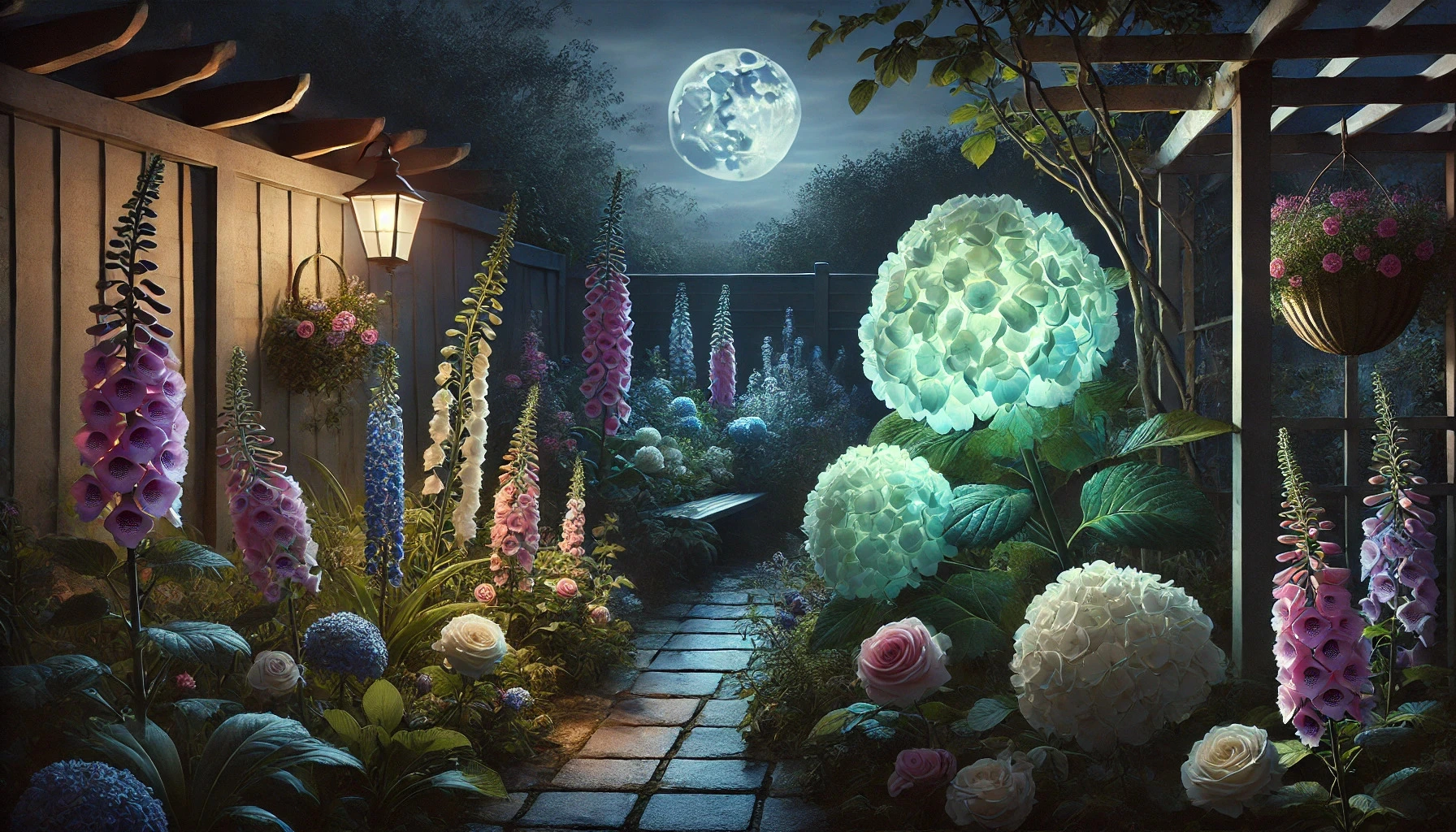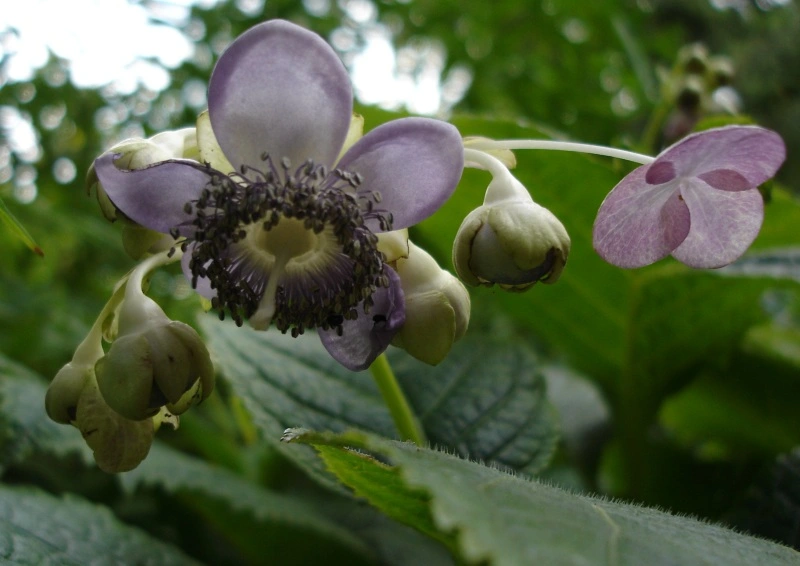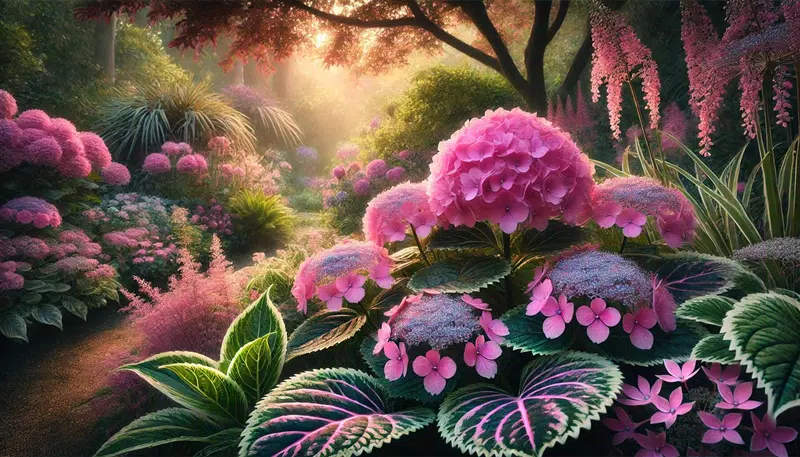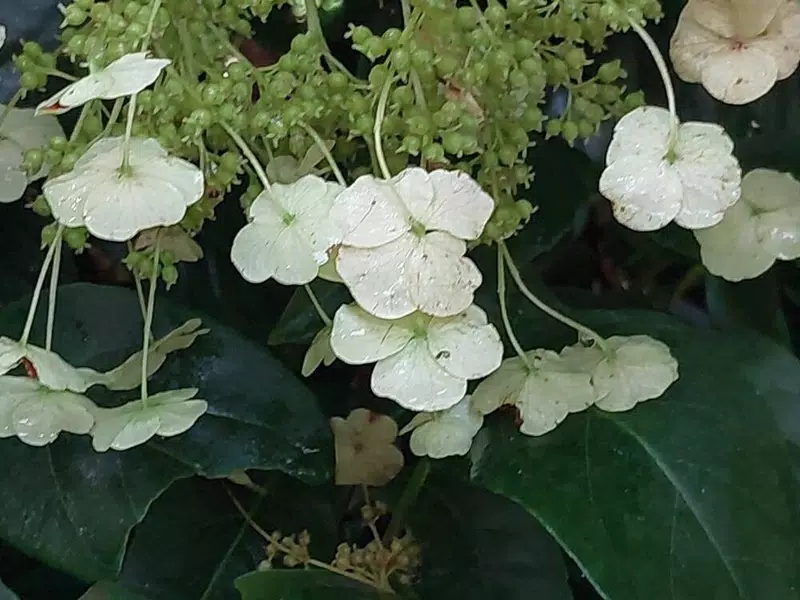
The Glow-In-The-Dark Hydrangea: Gardening Myth or the Next Big Thing?
Explore the truth behind glow-in-the-dark hydrangeas. Are they real, or just garden myth? A science-backed look at this luminous rumour.
Read MoreLooking for something truly unique for your shade garden? Meet the mysterious and underappreciated Deinanthe - distant cousins of hydrangeas with charm all their own.

While often marketed or described as “shade hydrangeas”, Deinanthe is in fact a separate genus within the Hydrangeaceae family - the same plant family that houses the well-known Hydrangea genus. This distinction is important from a botanical standpoint, though in appearance and growth habit, the similarities are clear enough to cause some confusion.
Native to the cool, forested regions of central and eastern Asia - particularly in the mountain woodlands of China and Japan - Deinanthe species are herbaceous perennials that die back completely in winter and re-emerge in spring. Unlike their woody hydrangea relatives, they do not form shrubs but grow in dense, leafy clumps. Their lush, veined foliage often resembles that of peonies or hellebores, while their drooping, waxy flowers have a unique and understated charm.
There are two widely recognised wild species: Deinanthe bifida and Deinanthe caerulea, each with subtly different leaf shapes and flower hues. In gardens, they are sometimes represented by cultivars such as ‘Blue Wonder’, which is prized for its delicate blue-mauve flowers and shade tolerance.
Their flowers appear in late summer and early autumn, often held in loose terminal clusters (cymes) with a mix of small fertile florets and larger sterile ones — a structure somewhat reminiscent of lacecap hydrangeas. Colours typically range from pale blue to violet, although environmental factors such as pH do not seem to influence bloom colour to the same extent as in bigleaf hydrangeas (Hydrangea macrophylla).
From a horticultural perspective, Deinanthe is best considered a shade-loving hydrangea alternative — ideal for those seeking unusual woodland perennials that pair well with ferns, hostas, and other moisture-loving companions. Their preference for cool, shaded conditions, along with their slow but steady growth habit, makes them a natural choice for patient gardeners with a love for subtlety and texture.
So while they may not technically belong to the Hydrangea genus, the visual and cultural resemblance earns them a rightful place in the broader hydrangea-loving community. As the Royal Horticultural Society notes in its plant finder database, these are plants of “distinct charm and refined elegance” — quietly spectacular rather than showy.

When I first came across Deinanthe species in a quiet woodland section of a botanical garden years ago, I was immediately captivated by their calm presence — delicate yet quietly confident. These plants don’t shout for attention like some of their more flamboyant hydrangea cousins. Instead, they reward the observant gardener with a kind of understated beauty that feels almost like a secret well kept.
All three varieties are wonderfully suited to woodland gardens or shaded borders where drama is replaced by subtlety. They shine when paired with finely textured foliage like ferns or feathery Thalictrum, and while they may be slower to establish, the reward is a plant that feels like it truly belongs — as though it has always been part of that quiet, green space.
These rare shade hydrangeas thrive in environments that mimic their native woodland habitats - cool, damp, and rich in organic matter. They’re not difficult to grow once established, but they do have specific preferences that reflect their slow-growing, shade-adapted nature. Here’s how to give them the best possible chance to thrive:
For the best results, plant Deinanthe alongside other shade-loving companions such as Helleborus, Brunnera, Dryopteris ferns, or Heuchera. They also benefit from being near moisture-retentive herbs like sweet woodruff or lemon balm, which can help maintain humidity in the microclimate around their base — a useful trick I’ve used in semi-dry borders with success.
Above all, remember that Deinanthe is a plant for the patient gardener. It won’t deliver instant impact, but given time and the right setting, it becomes a graceful, softly glowing presence in the shaded garden - a quiet reward for those who favour subtlety over spectacle.
Despite their undeniable charm and suitability for shaded gardens, Deinanthe hydrangeas remain underused in mainstream horticulture. Their rarity is not a reflection of poor performance or lack of beauty - quite the opposite. Rather, several practical and commercial challenges have contributed to their limited availability.
However, within the world of woodland and shade gardening, Deinanthe is cherished as a connoisseur’s plant. Those who grow it often describe it as a quiet companion - one that doesn’t shout, but gently rewards close observation and thoughtful care.
In my own experience, there’s something uniquely satisfying about growing a plant that few others even know exists. Watching a ‘Blue Wonder’ open its first pale-blue bloom in midsummer shade, knowing it took years to get there, carries a kind of joy you don’t get from mass-produced perennials. For the patient gardener, Deinanthe is not just rare - it’s personal.
Absolutely - if you’re new to the world of Deinanthe, ‘Blue Wonder’ is by far the best place to start. It combines the refined charm of the genus with a slightly more forgiving nature when it comes to garden conditions. This cultivated variety, likely selected from Deinanthe caerulea stock, offers reliable flowering, healthy foliage, and better adaptability to part-shade environments than many of its wild-type relatives.
In terms of appearance, ‘Blue Wonder’ delivers exactly what its name promises: elegant nodding blooms in soft powder-blue, often with a faint lavender tint, set against rich green leaves with gently serrated edges. It flowers in mid to late summer — usually around July in my garden - and although the blooms are modest in size, they have a peaceful, almost meditative quality when viewed in soft morning light.
From a horticultural standpoint, what really makes ‘Blue Wonder’ ideal for beginners is its willingness to settle. It’s slightly quicker to establish than its cousins, provided it’s planted in humus-rich, shaded soil that stays moist through the summer. I always advise first-time growers to give it a quiet spot, away from aggressive root competition, and to mulch it well each spring. With that small investment of care, it tends to reward you by its second year with healthy foliage and often the first signs of bloom.
I still remember my own first attempt at growing ‘Blue Wonder’ - it was in a shaded corner where nothing else seemed to thrive. That year, I had nearly given up on the spot altogether, but decided to try something different. It didn’t do much in its first season, but by the following July, there were two perfect blue flowers hanging delicately over a clump of moss and fern. I still think of that moment as a turning point - not just for the border, but for my appreciation of quiet, subtle plants.
It’s worth noting that ‘Blue Wonder’ also appears more frequently in specialist nurseries compared to other Deinanthe species. While still rare, it is usually the first to appear on availability lists, especially from UK growers focused on shade perennials. So if you’re searching for an elegant, low-key plant that rewards patience and thrives in quiet corners, ‘Blue Wonder’ is a wonderful choice.
Years later, I’ve grown other varieties too - some trickier, some more elusive — but this one still has a special place in the garden. I always recommend it to fellow gardeners exploring woodland-style borders for the first time, especially those who appreciate detail over drama.
Botanically speaking, no. Deinanthe belongs to a separate genus within the Hydrangeaceae family. While they share similarities in flower structure and habitat preference, they are not part of the Hydrangea genus itself. They are more accurately described as “hydrangea relatives”.
A shaded or partially shaded area with humus-rich, consistently moist soil is ideal. Woodland-style borders or north/east-facing beds work well. Protection from afternoon sun and wind is essential.
Not particularly - but it does require patience. Deinanthe is slow to establish and prefers stable, undisturbed conditions. Once settled, it’s surprisingly resilient if kept moist and shaded.
No. Unlike Hydrangea macrophylla, which changes colour based on soil pH, Deinanthe bloom colour is not pH-dependent. The natural flower tones remain in the soft blue, lavender, or lilac range.
Usually 2–3 years after planting. In the first year, it focuses on root development; flowering typically begins in the second or third growing season, depending on conditions.
It’s possible, but not ideal. Deinanthe has fleshy roots that dislike disturbance and prefer cool, consistent moisture - something harder to manage in pots. If attempting, choose a large, deep container and place it in full shade.
To some extent, yes. Its coarse leaves are not highly palatable to deer, but no plant is completely deer-proof. In high-pressure areas, additional protection may still be needed.
The most reliable method is division in early spring, just as new growth emerges. However, they are slow to increase and dislike disturbance, so propagation should be done sparingly and with care.
Early spring or early autumn is ideal, when soil temperatures are moderate and rainfall more consistent. Avoid summer planting, as young plants struggle in heat or drought.
No pruning is needed apart from removing spent flower stems or damaged foliage. As herbaceous perennials, they die back naturally in autumn and can be tidied up in late winter or early spring.
Yes, especially in shaded areas where traditional hydrangeas may struggle. Deinanthe’s smaller scale and differing bloom time can complement shade-tolerant hydrangea species nicely.
Excellent companions include ferns, hellebores, astilbes, brunnera, hostas, and moisture-tolerant herbs such as sweet woodruff, lemon balm, or even creeping thyme in partial shade.
While not a pollinator magnet, its open, fertile florets do provide nectar for small bees and hoverflies. It contributes modestly to pollinator-friendly gardening in shaded zones.
Yes. ‘Blue Wonder’ is a cultivated variety selected for its resilience and adaptability. It establishes more quickly and tends to bloom sooner than the wild types caerulea or bifida.
Specialist nurseries in the UK and USA occasionally offer them, particularly those focused on woodland perennials. It’s best to look in spring, as availability is limited and plants often sell out quickly.
Deinanthe hydrangeas may not be true Hydrangea species, but they share enough in common to deserve a spot in any shady garden — especially for gardeners seeking something refined, unusual, and quietly spectacular.
Whether you're building a peaceful woodland retreat or simply looking for a new botanical curiosity, these rare beauties could be just the thing to bring a touch of magic to your shaded spaces.

Explore the truth behind glow-in-the-dark hydrangeas. Are they real, or just garden myth? A science-backed look at this luminous rumour.
Read More
Discover the Hydrangea serrata 'Euphoria Pink', a stunning variegated hydrangea with vibrant pink blooms. Learn about its characteristics, cultivation, and care in this comprehensive guide.
Read More
A complete guide to Hydrangea seemannii, including planting, pruning, soil adjustments, eco-friendly pest management, propagation, and garden design ideas.
Read More